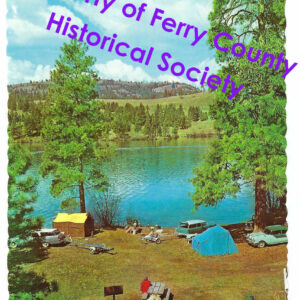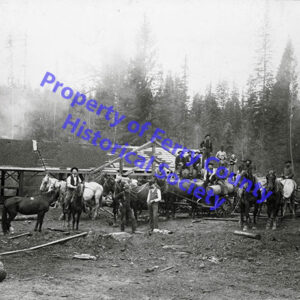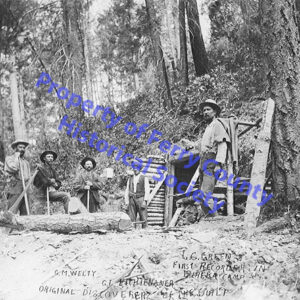Japanese Students Honor Ranald MacDonald
For the third year the Friends of MacDonald organization and Rishiri High School have sent two students and a
teacher to see places in the Northwest associated with the life and death of Ranald MacDonald. This year our October
guests were Kiri Matuya and Taito Ishikawa, seventeenyear- old second year students, and their history teacher, Miss Kayoko Suziki.
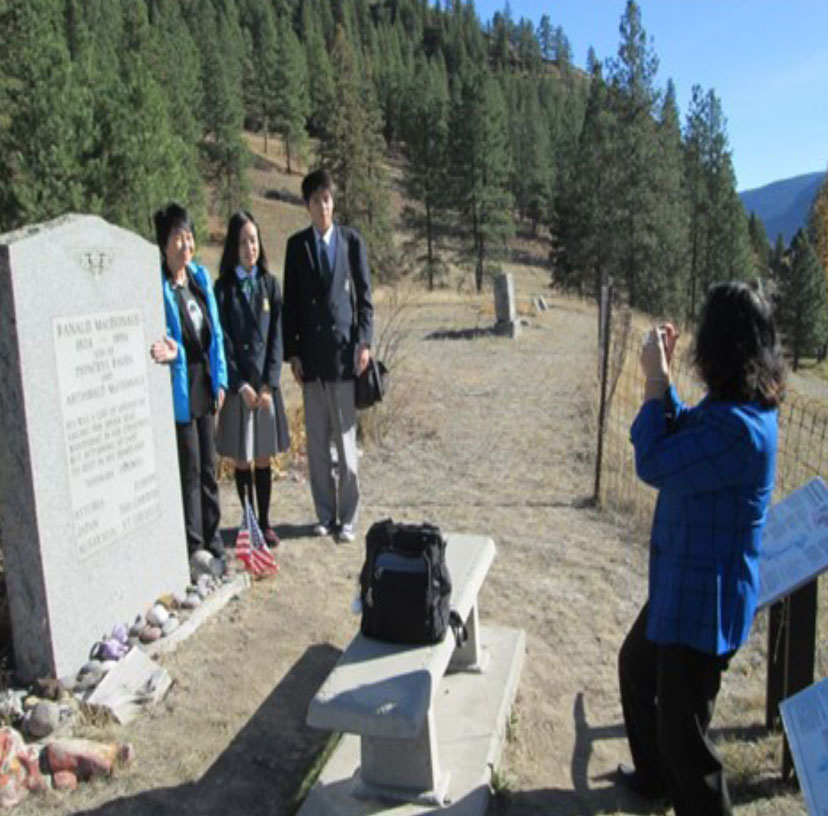
Friends of MacDonald member and translator Atsumi McCauley brought the guests from Spokane. They visited MacDonald’s grave where they left stones from the beach on Rishiri where MacDonald first landed in Japan. The tour group was unexpectedly joined at the gravesite by two journalists from the Spokesman Review who accompanied them to the remains of the cabin where MacDonald died and took the photograph that later appeared in the paper. Marge Stanton, who lives on the site, invited the whole party into her home for coffee.
This was followed by a little local shopping and a walk along the Rail-Trail to admire Curlew Lake and the trestle. The FCHS and the Kettle River History Club later hosted a potluck dinner at the Curlew Presbyterian Church for the visitors where County Commissioner Miller welcomed them. The students gave a PowerPoint presentation on Rishiri Island.
Swan Lake Kitchen Survives 2015 Fire
According to the U.S. Forest Service, the Swan Lake Community Kitchen was not damaged by the North Star Fire that destroyed a huge swath of forest southwest of Republic and threatened the city.
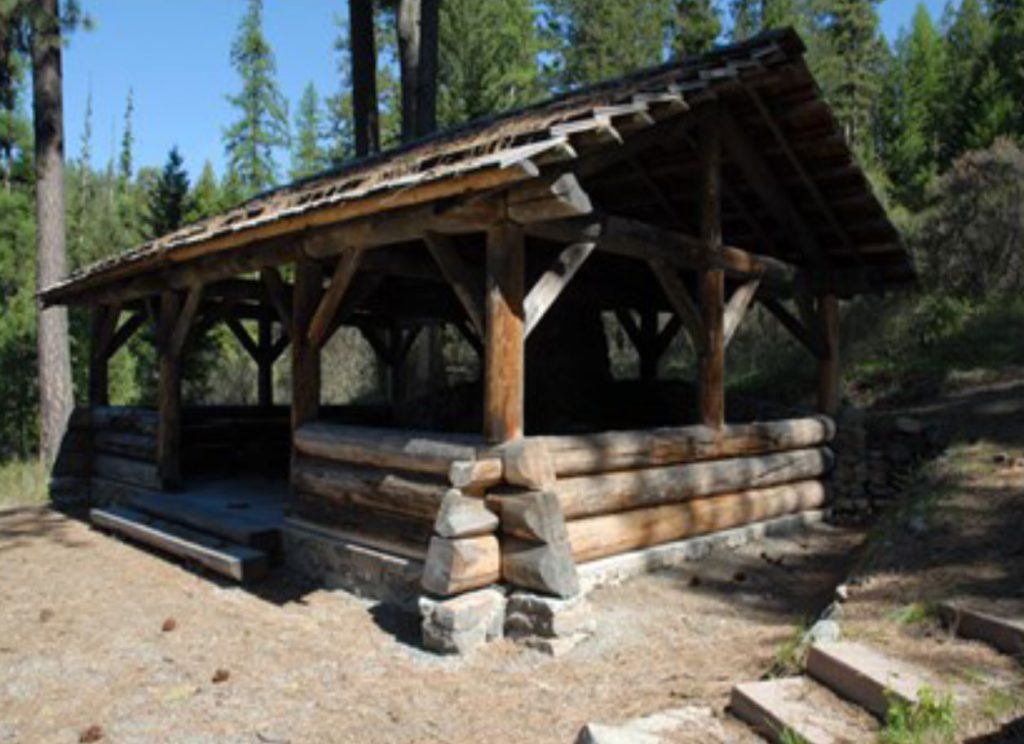
The structure was built by the Civilian Conservation Corps in the 1930s and is a classic example of CCC campground architecture. It was extensively repaired and restored by the National Park Service’s log structure specialist team several years
ago and is popular for family reunions, weddings and other events.
Our tourist season got off to a great start in late May with a visit by six members of the Great Northern Railway Historical Society. They came to us from Renton, Wenatchee, Malaga, Spokane, Kettle Falls and Pocatello to look at the remains of the Great Northern in this area. Two of the members are former Great Northern employees who worked in this area and know the route well.
They arrived on May 29th and began their tour at the Ferry County Historical Society’s museum across from the park. This was followed by a tour of Eureka Gulch and the area south of Republic where two ore mills, the “Red Mill” and the “White Mill”, were served by the Great Northern “High Line”. Long-time Republic resident and FCHS founding member Dick Slagle led this part of the tour.
A no-host dinner at Freckles Gourmet followed that evening. It was attended by 19 local residents interested in what the G.N. enthusiasts had to say about the railroad remains as possible tourist attractions. Ferry County was represented by County Commissioner Brad Miller and the City of Republic by City Council member Loni Simone.
The next day Larry Beardslee of the Golden Tiger Pathway Advisory Committee guided the group of GNRRHS members and local residents on an automobile tour of the Golden Tiger Pathway from the edge of town to the Herron Cr. Rd., including a stop at the long-abandoned siding used by the California Mine. This was followed by a stop at the recently decked and railed trestle across Curlew Lake to view newly surfaced section of the non-motorized rail trail. The tour continued to the Husky Car and Truck Museum where special attention was paidto the Lembcke Steam Sawmill which once cut railroad ties along with other lumber products.
This was followed by a quick tour of the Kettle River History Club’s historic Ansorge Hotel in Curlew, where the nickel-in-the-slot gramophone played “Casey Jones” on a cylindrical record. Lunch at Tugboat’s Drive In was somewhat delayed by the arrival of 20 Canadians on bicycles just ahead of us, but the tour eventually continued to Lancaster Creek, northeast
of Curlew, where the unimproved section of the rail trail gives access to the trail’s single tunnel. According to the veteran railroaders, the tunnel is relatively stable and dry, as railroad tunnels go, and should be adaptable for pedestrian use.
There was more discussion with the railroaders over dinner and breakfast next morning and most of the members headed home. Ron Ferrell of Pocatello stayed for the rest of the week. Ron was researching the remains of the mines and ore mills served by the Great Northern. As a result of his week spent measuring old foundations, relocating fallen bridges and dodging the Ferry County wildlife, the GNRRHS has published a guide to reconstructing these structures to scale for model railroads. Due to lack of space this will be reviewed in the winter Nugget.

